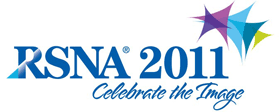
Abstract Archives of the RSNA, 2011
Rafael Miranda, Presenter: Nothing to Disclose
Howard Osborn RN, Abstract Co-Author: Nothing to Disclose
C. Daniel Johnson MD, Abstract Co-Author: License agreement, General Electric Company
License agreement, E-Z-EM, Inc
Kenneth T. Aakre, Abstract Co-Author: Nothing to Disclose
Sherrie L. Prescott RN, Abstract Co-Author: Nothing to Disclose
Carrie Phillips, Abstract Co-Author: Nothing to Disclose
Jodi Miller, Abstract Co-Author: Nothing to Disclose
Radiology departments are expected to provide patients with the highest level of quality and service in a timely manner. However, unexpected situations make staff more susceptible to misidentifying a patient before an exam. The purpose of this abstract is to describe how a training video and competency helped improve patient identification in three Radiology departments located across the United States.
We determined the number of patient misidentification incidents across all of our facilities located in AZ, MN & FL by querying our common SERF (Safety Event Report Form) database, an online event reporting tool used by all radiology staff.
Baseline data showed that during the last six months of 2009, we had a combined incidence of 15 patient misidentifications in all our facilities among approximately 1,500,000 yearly exams. A common finding across all sites was that some technologists relied on the information given by others without double-checking documents themselves.
Based on the analysis and conversations with staff we decided to produce a “Patient Identification” training video with a competency assessment test for the radiology departments, which would serve to document best practice, job expectations and the importance of patient identification. The video included an outline of the correct patient identification process, key points to remember, and highlighted several real-life scenarios of pitfalls to avoid.
Initial baseline data revealed 15 incidents of patient misidentification during the last 6 months in 2009. We spent the first six months of 2010 meeting with staff, producing the training video and competency tests. The mandatory training (video review and competency online testing) went into effect on July 1, 2010. Post improvement results demonstrated one incident of patient misidentification (93% reduction) during the last six months of 2010 across all our facilities.
A training video linked to competency testing and performance expectations highlighting several real-life scenarios of things to avoid when identifying a patient before exams helped to reduce misidentifications by 93%.
Correct patient identification is a critical safety metric that is expected by all patients and demanded by the Joint Commission.
Miranda, R,
Osborn, H,
Johnson, C,
Aakre, K,
Prescott, S,
Phillips, C,
Miller, J,
Improving Patient Identification in a Radiology Department. Radiological Society of North America 2011 Scientific Assembly and Annual Meeting, November 26 - December 2, 2011 ,Chicago IL.
http://archive.rsna.org/2011/11002656.html

